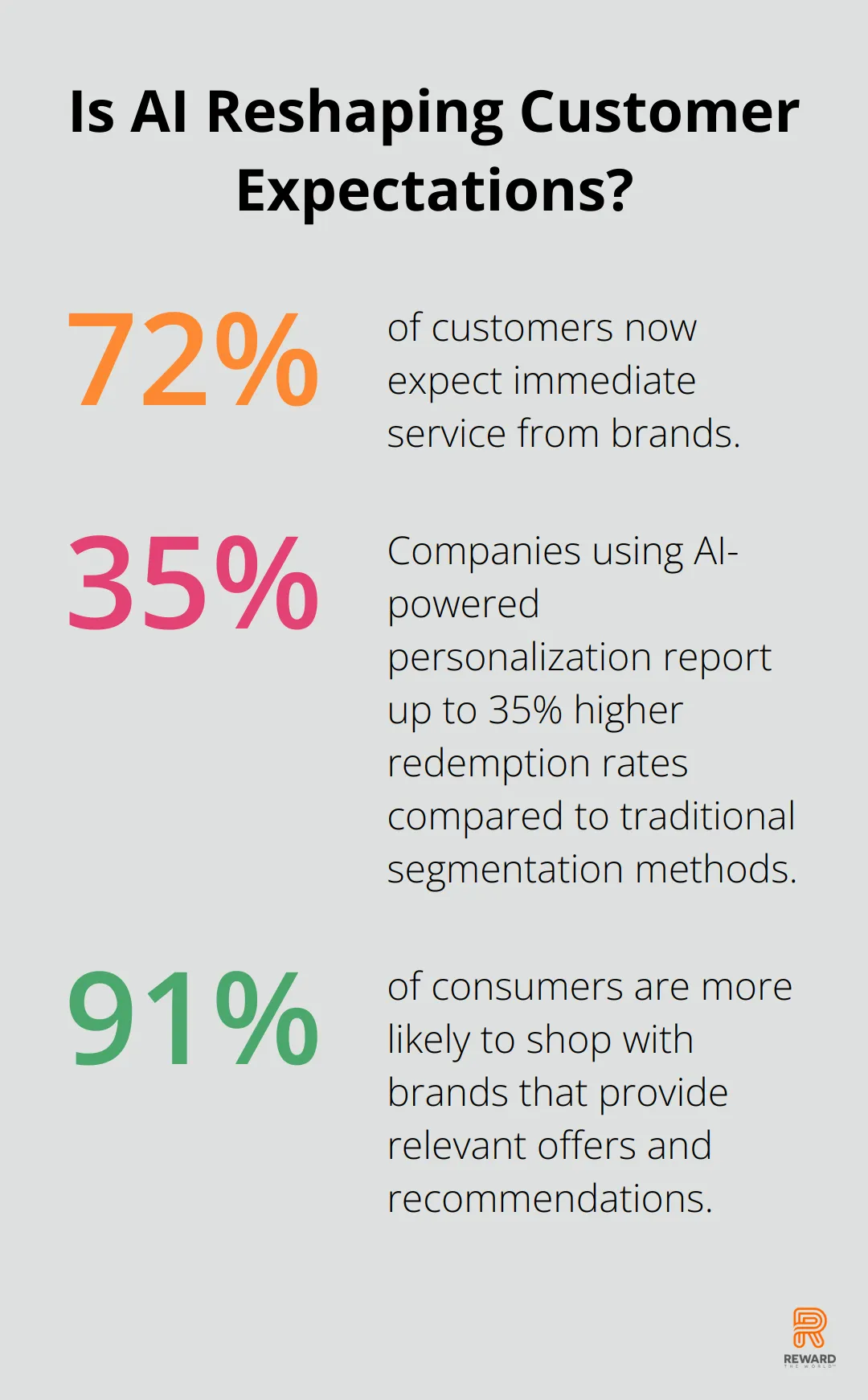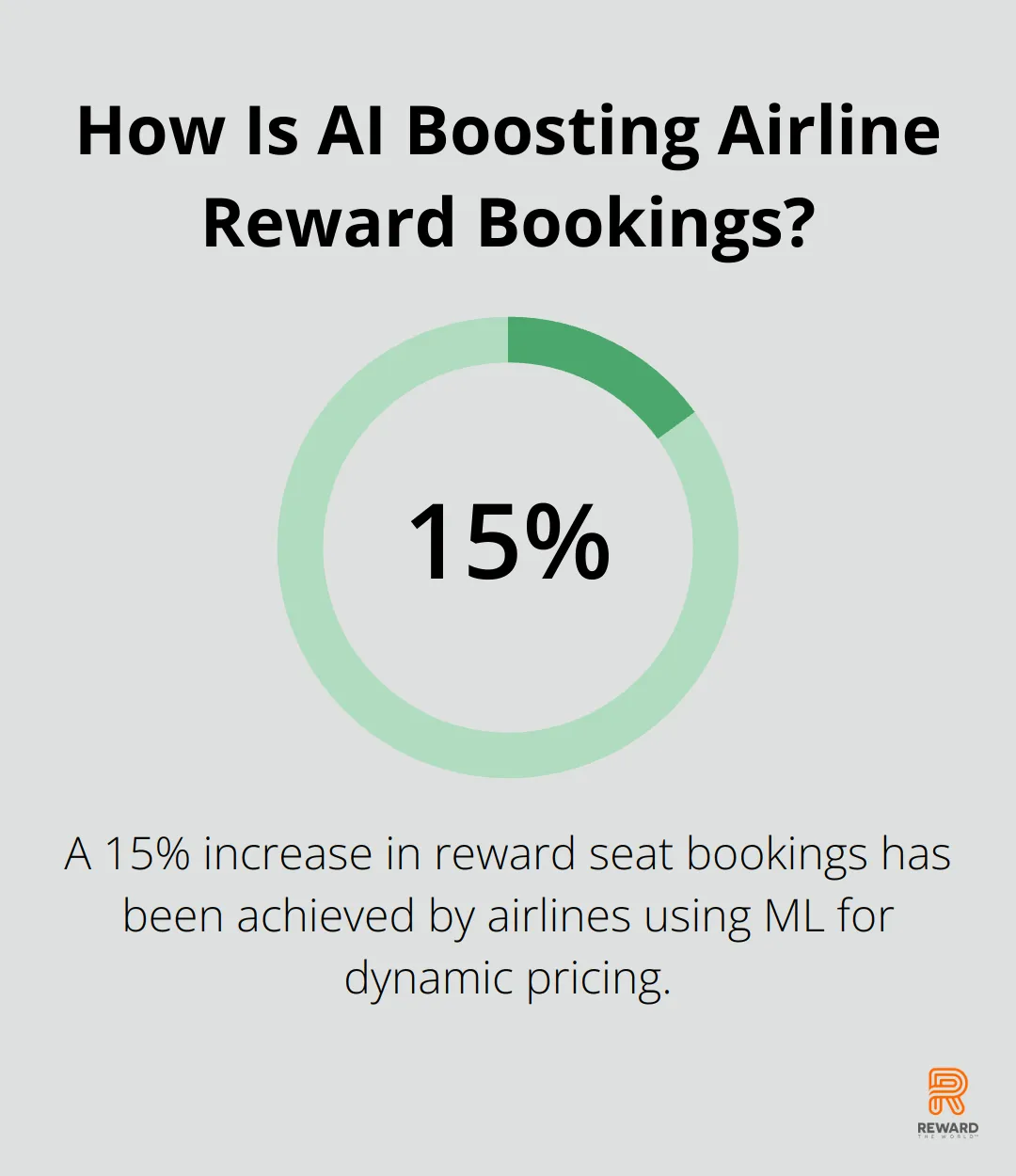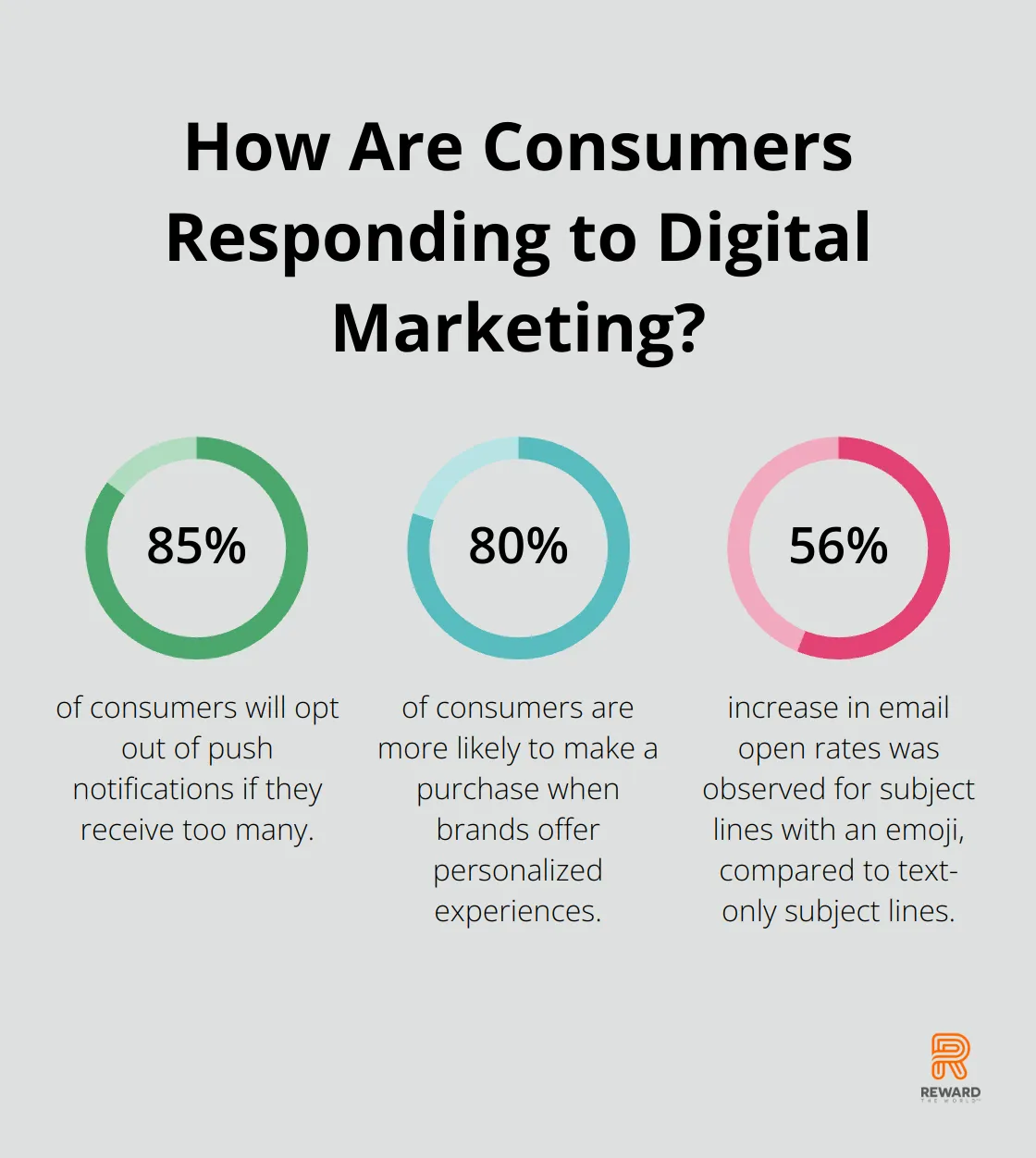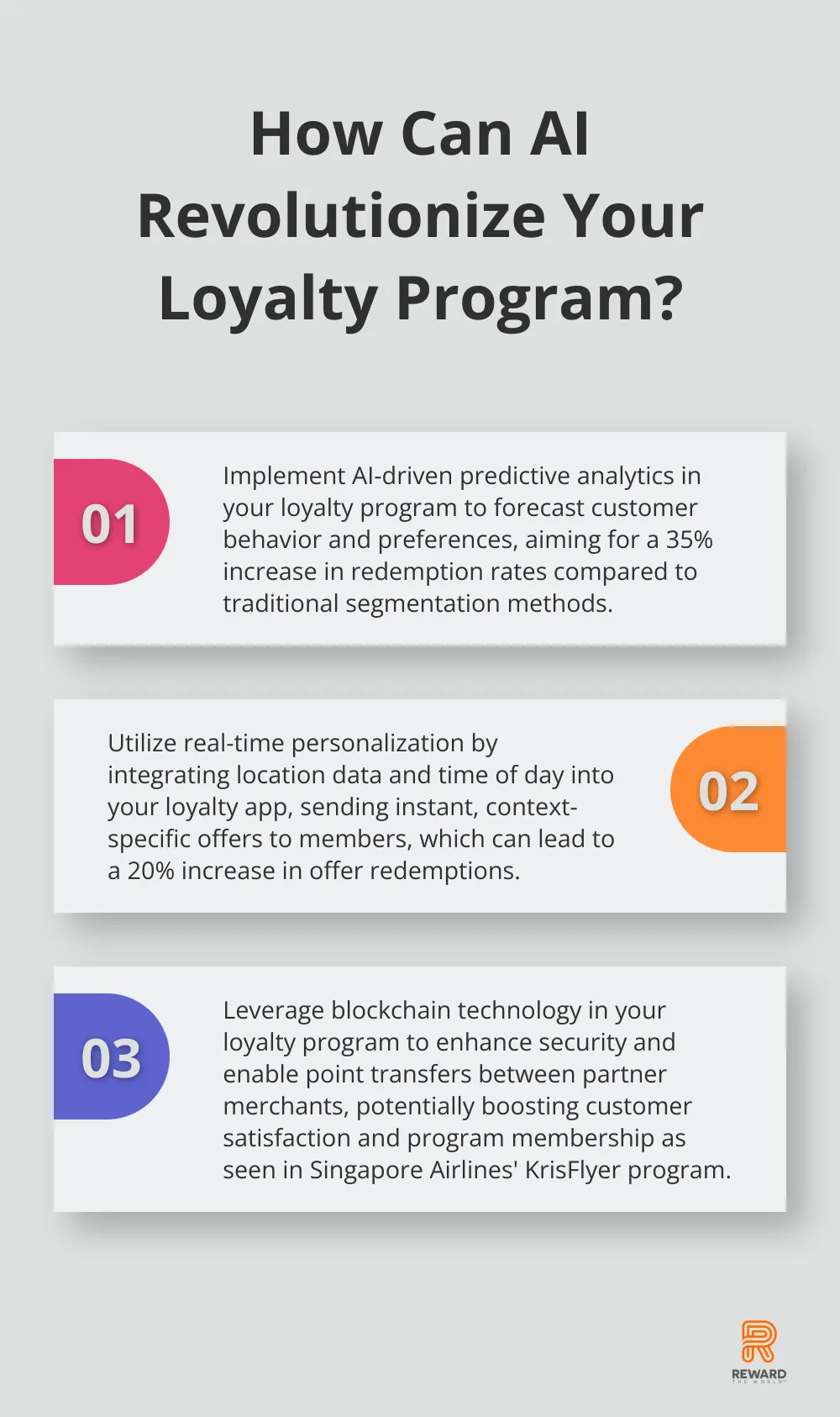
Hyper-personalized loyalty programs are revolutionizing customer engagement in 2025. At Reward the World, we’ve seen firsthand how AI personalization is transforming the way businesses interact with their customers.
These advanced programs use cutting-edge technology to deliver tailored rewards, offers, and experiences that resonate with individual preferences and behaviors. As we look to the future, hyper-personalization will be the key to building lasting customer relationships and driving business growth.
How Hyper-Personalized Loyalty Programs Are Changing the Game in 2025
The Power of Individualized Experiences
In 2025, hyper-personalized loyalty programs are reshaping customer engagement strategies across industries. These advanced programs use AI and big data to create tailored experiences for each customer, moving far beyond the traditional one-size-fits-all approach.

Hyper-personalization in loyalty programs means delivering rewards, offers, and communications that resonate with each customer’s unique preferences and behaviors. A recent Zendesk study reveals that 72% of customers now expect immediate service from brands. This shift has prompted companies to invest heavily in technologies that analyze vast amounts of customer data in real-time.
Sephora’s Beauty Insider program exemplifies this trend. It uses purchase history and browsing behavior to send personalized product recommendations and exclusive offers. This level of customization has resulted in a 30% increase in customer engagement for the beauty retailer.
AI-Driven Predictive Analytics
AI-driven predictive analytics stands out as one of the most significant trends in loyalty program personalization. These sophisticated algorithms forecast customer behavior and preferences with remarkable accuracy.
Companies that use AI-powered personalization report up to 35% higher redemption rates compared to traditional segmentation methods. This dramatic improvement underscores the potential of AI in revolutionizing loyalty programs.
Real-Time Personalization
Real-time personalization represents another key trend. Thanks to advances in data processing and mobile technology, loyalty programs now adjust offers and communications instantly based on a customer’s current context.
Starbucks, for instance, uses location data and time of day to send personalized drink offers to its Rewards members. This real-time approach has resulted in a 20% increase in offer redemptions for the coffee giant.
The Impact on Customer Engagement and Retention
The effects of hyper-personalization on customer engagement and retention are profound. An Accenture study found that 91% of consumers are more likely to shop with brands that provide relevant offers and recommendations.
Moreover, hyper-personalized loyalty programs prove to be powerful retention tools. Research shows that small improvements in customer retention rates can yield substantial profit growth, underscoring the financial impact of loyalty and retention efforts.
The Future of Loyalty Programs
In the competitive landscape of 2025, businesses that fail to embrace hyper-personalization in their loyalty strategies risk falling behind. As customer expectations continue to evolve, the ability to deliver truly individualized experiences will become a key differentiator in the battle for customer loyalty.
The next frontier in hyper-personalized loyalty programs lies in the technology that powers these sophisticated systems. Let’s explore the cutting-edge tools and techniques that are driving this revolution in customer engagement.
What Technologies Power Hyper-Personalized Loyalty Programs?
AI and Machine Learning: The Brains Behind Predictive Analytics
AI and Machine Learning form the backbone of modern loyalty programs in 2025. These technologies analyze vast amounts of customer data to predict future behaviors and preferences with remarkable accuracy.

Amazon’s recommendation engine, powered by AI, drives 35% of the company’s total sales. This showcases the immense potential of AI in boosting customer engagement and sales through personalized suggestions.
ML algorithms also enable dynamic pricing in loyalty programs. Airlines like Delta use ML to adjust reward seat pricing based on demand, route popularity, and individual customer value. This approach has led to a 15% increase in reward seat bookings and higher customer satisfaction.
Big Data and Real-Time Processing: Delivering Instant Personalization
Big data analytics and real-time processing capabilities allow loyalty programs to deliver personalized experiences instantly. This technology enables companies to analyze customer behavior as it happens and respond with relevant offers immediately.
Starbucks uses real-time data processing to send personalized offers to customers’ phones. This strategy has resulted in a seamless and rewarding experience for customers.
Mobile Apps and Location-Based Services: Contextual Engagement
Mobile apps integrated with location-based services transform how loyalty programs engage customers. These technologies enable brands to deliver hyper-relevant offers based on a customer’s physical location and real-time context.
Walgreens’ loyalty app uses geofencing technology to send personalized reminders and offers when customers are near a store. This approach has led to a 500% increase in offer redemptions compared to traditional email campaigns.
Blockchain: Enhancing Security and Transparency
Blockchain technology emerges as a game-changer for loyalty programs, offering enhanced security, transparency, and interoperability. This decentralized ledger system ensures that loyalty points are securely stored and easily transferable between programs.
Singapore Airlines’ KrisFlyer program uses blockchain to allow members to spend miles at partner merchants. This innovation has significantly boosted customer satisfaction, with the program celebrating its 10 million member milestone in March 2025.
The Future of Loyalty Technology
As these technologies continue to evolve, the potential for creating truly personalized and engaging loyalty experiences expands. Businesses that leverage these tools effectively will build stronger, more profitable customer relationships in the years to come. However, implementing these advanced technologies requires careful planning and execution. In the next section, we’ll explore the practical steps businesses can take to implement hyper-personalized loyalty programs effectively.
How to Implement a Hyper-Personalized Loyalty Program
Collect and Analyze Customer Data
The foundation of any hyper-personalized loyalty program is high-quality customer data. Start by collecting data from various touchpoints: purchase history, website interactions, social media engagement, and customer service interactions.
Statistics show that an increase in customer retention by 5% can lead to a company’s profits growing by 25% to around 95% over a period of time. However, data privacy and transparency must take priority. Always obtain explicit consent from customers and clearly communicate how their data will be used.

Once you collect the data, use advanced analytics tools to uncover meaningful insights. Look for patterns in customer behavior, preferences, and purchase cycles. This analysis will form the basis of your personalization strategy.
Create Personalized Rewards and Offers
With your data insights in hand, create rewards and offers that resonate with individual customers. Move beyond generic discounts and consider experiential rewards that align with customer interests.
For example, a sports retailer might offer VIP tickets to local games for high-value customers who frequently purchase team merchandise. A beauty brand could provide personalized skincare consultations based on a customer’s purchase history and skin type.
Timing is essential. Use predictive analytics to determine when a customer is most likely to make a purchase and send targeted offers at those moments. Research from Epsilon indicates that 80% of consumers are more likely to make a purchase when brands offer personalized experiences.
Craft Tailored Communications
Communication maintains engagement with your loyalty program. Use the insights from your data analysis to tailor your messaging across all channels.
Personalize email subject lines, content, and send times based on individual preferences. According to a study by Experian, email subject lines with an emoji increased open rates by 56%, as compared to text-only subject lines.
Use push notifications for mobile app users, but be mindful of frequency. A study by Airship found that 85% of consumers will opt out of push notifications if they receive too many.
Consider AI-powered chatbots for instant, personalized customer service. These can handle routine inquiries, freeing up human agents for more complex issues.
Measure and Optimize Continuously
A successful hyper-personalized loyalty program requires ongoing measurement and optimization. Set clear KPIs such as customer lifetime value, retention rate, and program engagement metrics.
Use A/B testing to refine your rewards offerings and communication strategies. Test different reward types, messaging styles, and delivery methods to see what resonates best with different customer segments.
Regularly survey your loyalty program members to gather direct feedback. This qualitative data can provide valuable insights that may not be apparent from quantitative metrics alone.
Hyper-personalization is an ongoing process. As customer preferences evolve, so should your loyalty program. Stay agile and be prepared to adapt your strategy based on performance data and customer feedback.
Platforms like Reward the World (available in 15 languages with a 250 million-user base) can simplify the process, providing the tools and expertise needed to create a truly personalized loyalty experience. With instant reward delivery spanning eGift cards, cash payments, and points in over 60 million rewards across various categories, it suits all demographics and budgets.
Final Thoughts
Hyper-personalized loyalty programs have revolutionized customer engagement strategies. Advanced technologies like AI personalization, big data analytics, and blockchain enable businesses to create tailored experiences that resonate with individual customers. These programs boost customer satisfaction, retention, and drive significant revenue growth.

The future of loyalty program technology promises further advancements in AI and machine learning capabilities. We anticipate more accurate predictive analytics and real-time personalization. The integration of augmented and virtual reality technologies may soon allow for immersive, personalized reward experiences.
At Reward the World, we understand the complexities of implementing and managing hyper-personalized loyalty programs. Our platform offers a comprehensive solution for businesses looking to elevate their customer engagement strategies. We empower companies to create loyalty experiences that truly resonate with their customers (through instant reward delivery, seamless integration, and powerful analytics tools).
